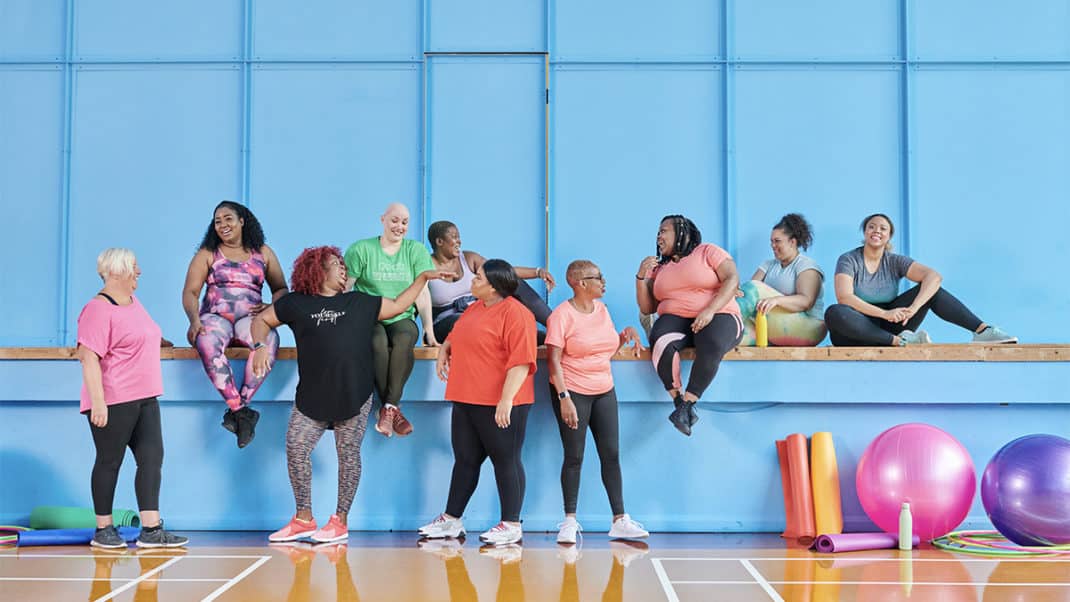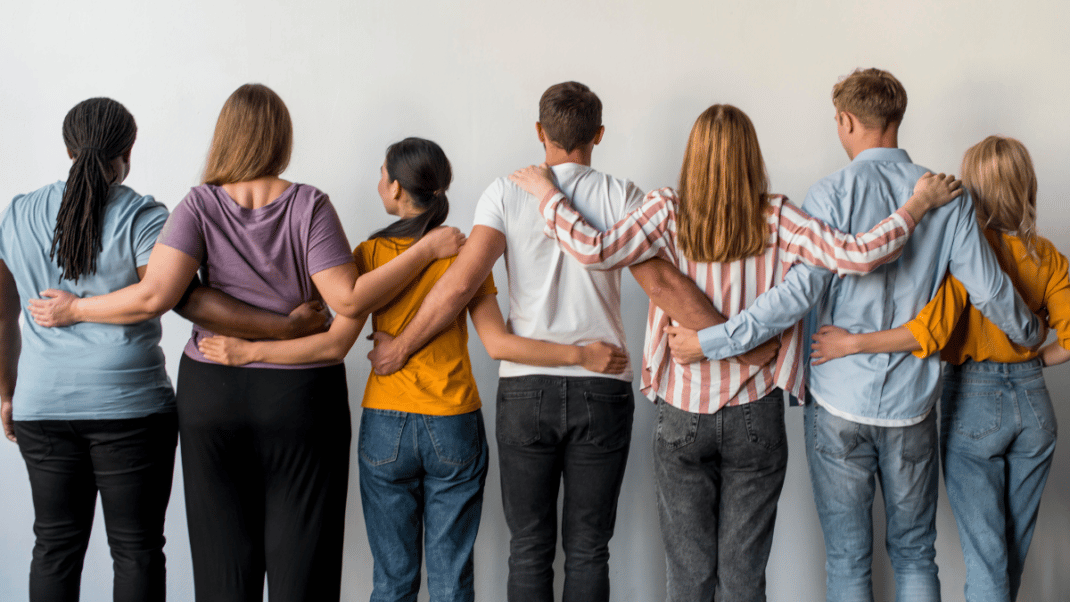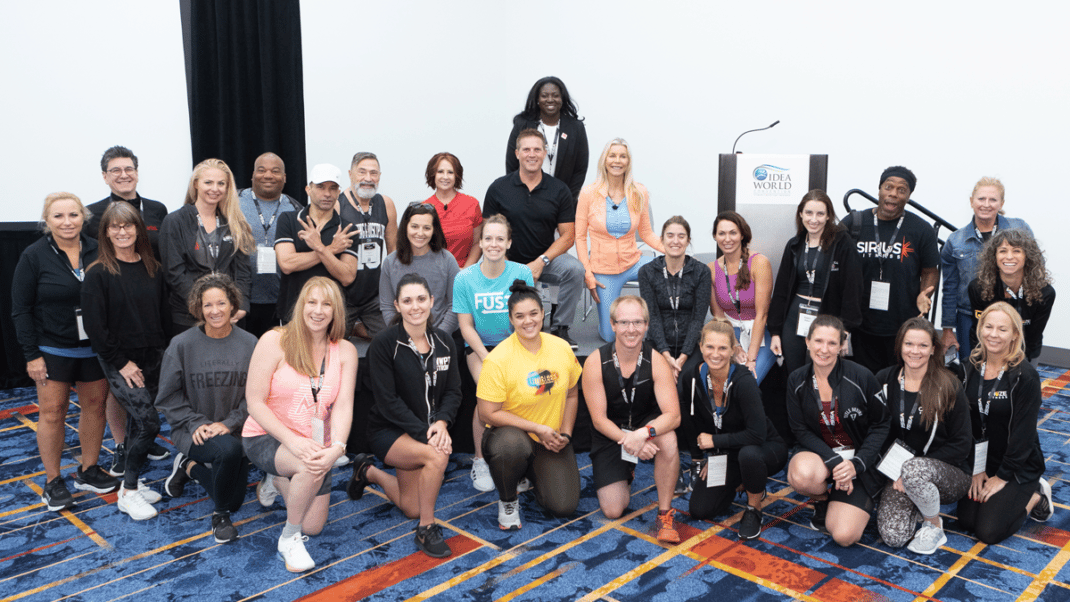Building Community
Group fitness instructors share their strategies for creating inclusive, welcoming spaces.

Questions
How do you build community and create an inclusive space in your fitness classes? How has building community impacted your experience with participants? What advice would you share with other instructors?
From the Experts
The Power of Group Fitness
To build community and create an inclusive group fitness space, I think it’s important to get to know your participants. I do this by arriving early so that I have time to talk with attendees and meet new people to make them feel welcome. I also find it helpful to introduce newcomers to the class regulars because it initiates conversation and empowers them to support the new class members and welcome them into the group. During class, I “work the room” to interact and make eye contact with everyone so that they feel part of the group. In addition, I stay after class, and I make it a point to follow up with new participants to thank them for coming, answer questions and encourage them to come back.
Building a fitness community is the power of group fitness—everyone is coming together in a welcoming, inclusive space to have fun, motivate each other, and work together to reach their health and fitness goals. When I see how the strong community has positively impacted attendees, it motivates me to be a better instructor. I enjoy seeing people come back to class every week, bringing smiles, energy and a positive attitude, which makes the class enjoyable and fun for everyone, including me!
[Some advice:] A little bit of time goes a long way. Make time before and after class to get to know your participants, introduce them to each other, and make everyone feel welcome and part of the community.
Ashley Artese, PhD, ACE-GFI, AFAA-GFI, ACSM-EP, RYT 200, licensed Zumba® instructor, Les Mills BODYATTACK™ and BODYCOMBAT™ instructor, Durham, North Carolina.
See also: How To Create a Workout Community
Building Community In and Out of Class

Community also extends outside the walls of the studio into the café, lunch dates, graduation parties and more.
My tips for building community:
- Be the party host 5–10 minutes before and after classes. Talk about non-class topics like vacations.
- Introduce new participants to at least three people, including other instructors or coaches who are taking the class, the “mayor” of group fitness (i.e., the participant who takes all the classes and knows everyone), and a person with similar interests/family structure or work to provide an accountability buddy.
- During class, make it more personal by using people’s names or a general group name for that class (e.g., based on class format, location, etc.).
- Celebrate small successes, such as regular attendance. You can teach a signature format, and when a participant attends 25 classes, gift them a signature format shirt.
- Word choice for success is imperative. This means cuing anatomically, using imagery that each person understands and focusing on attributes rather than aesthetics. For example, try “feel the strength in your body” over “let’s get summer ready/a bikini body.” Also provide movement “options,” rather than “levels” (e.g., “here are three options” versus “level one is . . . , level two is . . .”). Lastly, use positive language—like “lengthen your spine” over “don‘t round your back”—and use collective words like “we,” “our” and “team” over “I” statements. For example, “let’s finish strong together” is better than “give me more.”
- Instructors need to adapt based on the room. I have a person in a wheelchair in a total-body sculpting class. [I changed] sequencing so she only gets out of the wheelchair once—either in the beginning of class or at the end—and [offer options elsewhere].
Overall, community builds retention in your current classes, helps build new classes and can cross-promote other classes on the schedule. Community also extends outside the walls of the studio into the café, lunch dates, graduation parties and more. Remember: Be accessible, be real and be authentic.
Alex McLean, MS, international fitness educator, Stamford, Connecticut.
See also: Fitness Community and Exercise Levels
Building Community With Shared Energy and Goals
Creating a welcoming environment is key to building an inclusive group fitness community. To do this, I greet participants as they come in the door, learn their names and check in with everyone before class to see how they’re doing. I also incorporate team- and partner-based activities to encourage attendees to work together and get to know each other. In addition, throughout the class, I emphasize that the workout is for everyone and encourage them to work at their own pace and to listen to their body. I believe that it’s important to find a balance between creating a challenging and energizing environment, while also making it encouraging, engaging and fun.
Building community not only keeps my participants coming back, but it also keeps me coming back, as we are all working together to accomplish shared and individual goals. Getting to know attendees has given me a greater sense of awareness about who is in the room and how I can best meet their needs. This makes teaching rewarding because I recognize how I play a role in their fitness journey, and I strive to empower them to continue to challenge themselves and make strides towards their goals.
[My advice is to] commit to your craft: Put in the time to get to know people in your class, engage with them, and create class activities and drills that encourage them to work together.
Daniel Marshall, EdD, AFAA-GFI, licensed Zumba® instructor, Les Mills BODYCOMBAT™ instructor, Durham, North Carolina.
Sarah Kolvas
Sarah Kolvas is the content manager for IDEA.






